The Beast of Gevaudan (pronounced je-vu-dawn) is one of the most legendary cryptids of Europe. The creature stalked the mountainous south-central French region of Le Gevaudan in the mid-1760s and left a kill count of over half a hundred people in its wake. Many of the peasants in the area of the time cried out for the king’s justice, declaring that a loup-garou (werewolf) was killing the smallfolk in droves and there was nothing they could do to protect themselves. Oddly enough all descriptions of the beast are similar which is very rare among mass panics concerning monstrous cryptids.
The contemporary description is that the creature was wolf-like in appearance but much bigger than any common wolf. Its front legs were slightly shorter than the back with huge talons that dragged in the dirt. Its head was massive and in the shape of a greyhound bearing enormous fangs. Its hair was reddish with small straight ears, a wide muscular chest of white hair, and a streak of thick black hair (almost like a mohawk) ran down the spine. In some cases, the peasants reported the thing could walk on two feet like a man, but the majority of descriptions dictate the Beast of Gevaudan was more wolf-like in nature.
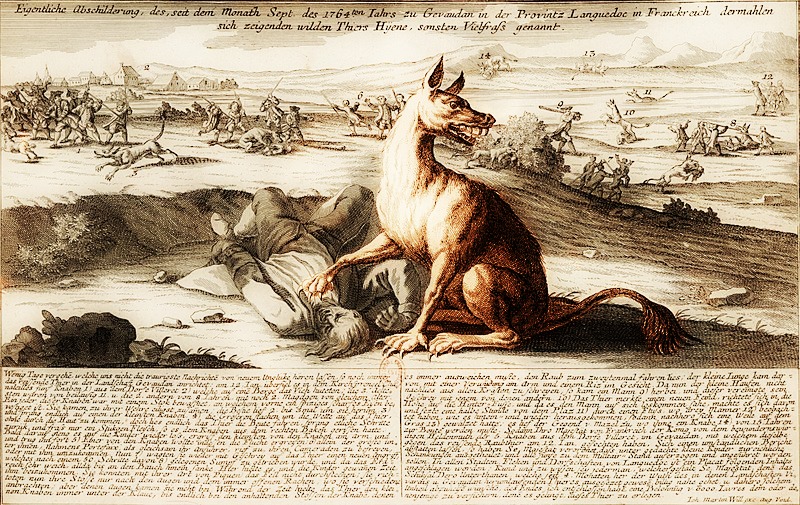
Contemporary depiction of the creature.
The first sightings were in June 1764, there weren’t any known fatalities until the following month of July. With each gruesome death, the creature’s renown spread. Survivors would gather together telling the tales of their encounters with the beast and lamenting the lost loved ones devoured. According to the peasantry, the monster could not be killed in any formal manner.
While defending themselves, the survivors had stabbed the beast, tried to run it through with lances, and discharged firearms hitting the creature multiple times… but to no avail. Hunters had taken it upon themselves to end the terror and claimed to have wounded the beast of Gevaudan many times. It always reappeared elsewhere soon after seemingly unharmed. With rumors abounding through France of the creature’s invulnerability and unstoppable path of destruction, panic spread among the lower classes and the terror was equaled by their fascination.
[the_ad_placement id=”manuel”]
No longer able to brush the rumors of a werewolf terrorizing the people as superstitious nonsense anymore, King Louis XV of France sent a cavalry division from the royal army into Le Gevaudan to deal with the monster and put the peasants to ease. The soldiers were expecting to find a large wolf who gained a taste for human flesh. Instead, they found a community shaken to its very core with fright and witnessed the beast with their own eyes on many occasions as they hunted it, astonished at the accuracy with which the monster had been described to the King.
The soldiers managed to fire their guns on the Beast of Gevaudan many times, though it always managed to escape. Slowly, the creature’s appearances and killings dwindled. To the point, they eventually died out entirely for a time. The royal cavalry commander declared that they killed it and the monster had died from the wounds inflicted upon it by the King’s soldiers. The division packed up and left the area, telling all they met that the beast had been slain and they all were free to go about their lives as usual once more. Sadly shortly after, the cavalry division left and the killings began anew. The beast was alive and well.
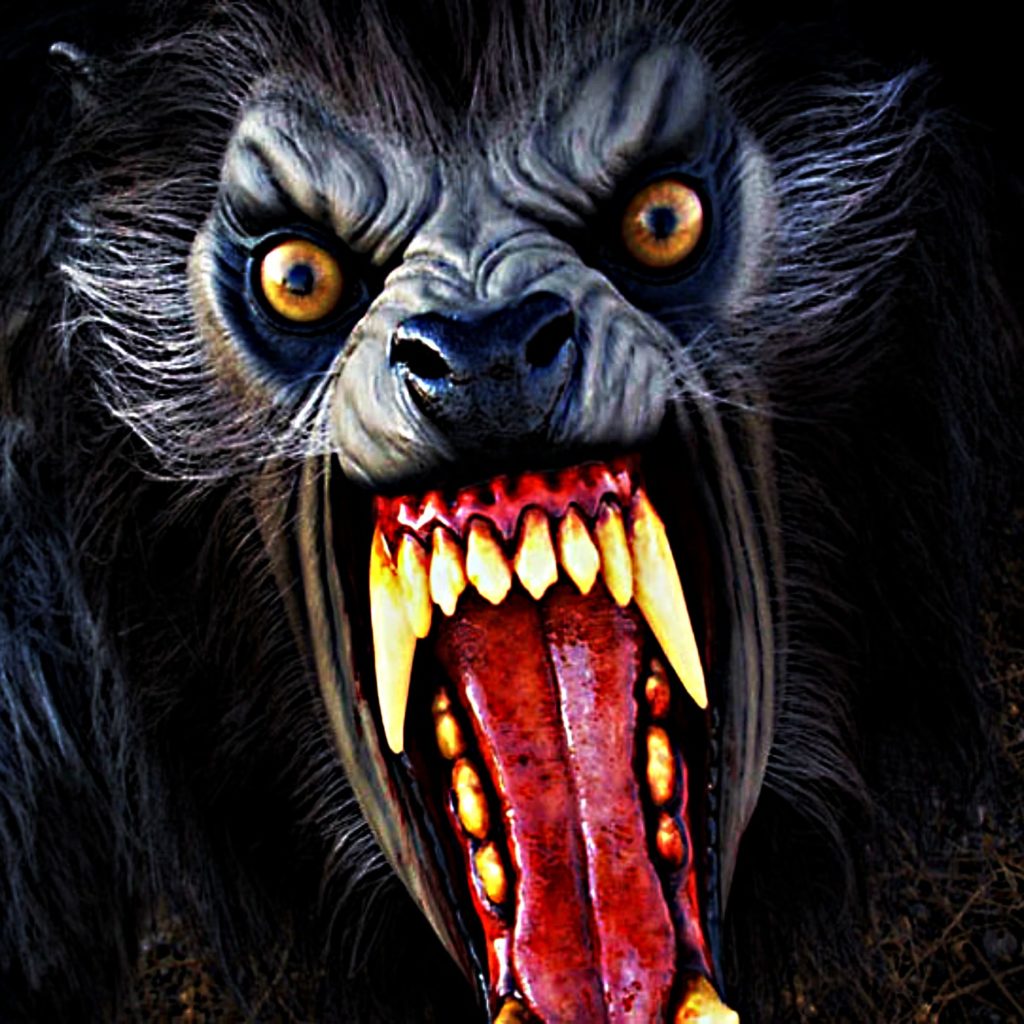
The Beast seemed supernaturally unkillable
Word got out across the country, a massive bounty had been placed upon the beast’s head. This drew the most hardened and grizzled hunters from all over France to travel to the mountainous region and claim the prize. Many never returned from the woods or areas they searched for the beast in; only for their mangled desiccated bodies to be found later. Others would come upon the beast and survive the encounter claiming to have at least wounded it. But there were a lot of hunters that just killed any wolf they came across, not really believing in the werewolf tales. Still, the hunters and peasants kept on dying in horrifying ways. Nothing seemed to be able to stop the beast.
Villagers abandoned their homes, farmers left their farms, and only the foolish went outside alone. Entire villages were left to become ghost towns. The intellectuals of France believed a new species of monstrous animal had been let loose in the countryside. Something perhaps from Africa or the Americas. Nothing could ever be concluded other than the body count piling up with seemingly no end. By this time word of the horror had spread far and wide, the Beast Of Gevaudan had begun to gain international fame.
[the_ad_placement id=”manuel”]
However, it turned out the beast was not as invincible as was thought. On the evening of June 19, 1767, it was brought down after a vicious fight by a hunter named Jean Chastel, who used silver bullets, a known weakness of werewolves. The skilled fighter had only managed to kill the creature after shooting it many times at point-blank range. The beast’s kill count was around sixty people. Men, women, and children all being fair game to the monster.
Its stomach was cut open by doctors to reveal the bones of a child within, it looked like the Beast of Gevaudan’s reign of terror had finally come to an end. The creature’s corpse was paraded through Le Gevaudan to the praises of all the peasantry. Eventually, they made their way to King Louis XV, who ordered the corpse to be immediately disposed of. The beast was buried in an unmarked grave whose location has been lost to history.

A statue in France dedicated to a peasant woman who fought the beast.

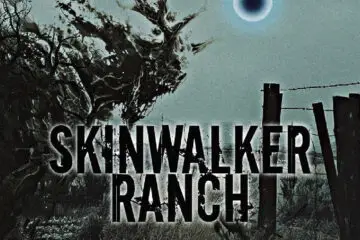
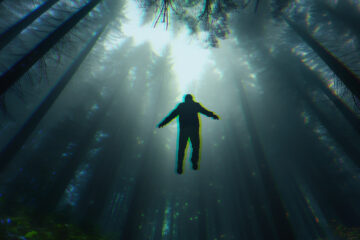
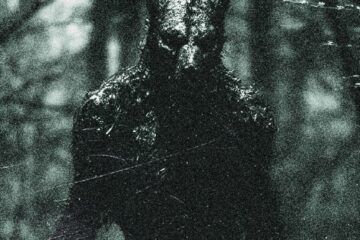
2 Comments
Bob Williams · November 5, 2018 at 2:43 am
With today’s technology, how difficult would it be to find Beastie’s remains, and how much interest would there be? I find it regrettable the burial site wasn’t recorded or marked. I’ve been intrigued by the story since reading about it many, many years ago. I’m also intrigued by the notion that Chastel might have been involved in some way with the creature beyond just being the one who killed it.
Cryptic Chronicles · November 6, 2018 at 4:10 pm
Yea there’s no log of where its remains were put whatsoever. With today’s tech, we should def be able to find it if there’s at least a clue right? What do you mean he might have been involved with the creature beyond being the one who killed it?